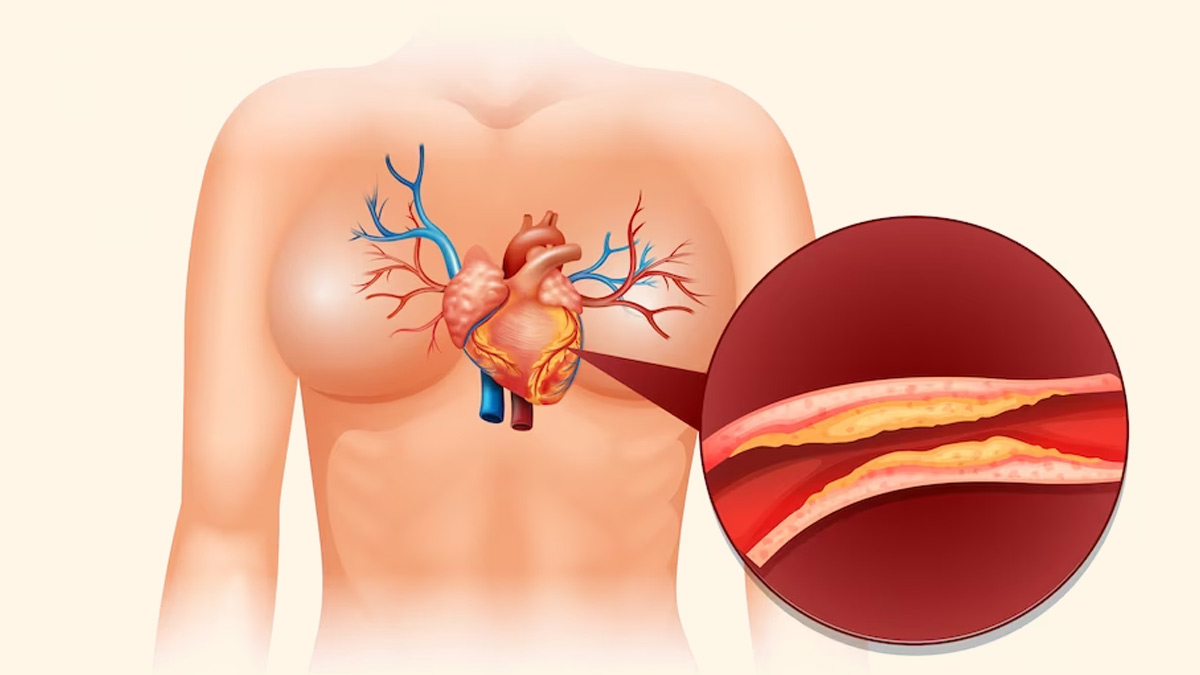
Angina is a type of chest pain produced by a decrease in blood flow to the heart. Angina is mostly an indication of coronary artery disease. Angina, commonly known as angina pectoris, produces squeezing, pressure, heaviness, tightness, and discomfort in the chest.
Table of Content:-
“Angina is basically caused by obstructions in the cardiac arteries. So, when the cardiac arteries get stopped, the supply falls and when the demand is great. Therefore, as a result, the patients start suffering chest pain,” said Dr Amit Bhushan Sharma, Cardiologist, Paras Hospital, Gurgaon.
There are different types of angina, each with its own characteristics. The main types include stable angina, unstable angina, and variant angina.
1. Stable Angina
“Stable angina occurs when the patient is well at rest but becomes uncomfortable when performing strenuous activities such as climbing stairs or walking uphill. He is unable to pinpoint the source of the discomfort; instead, it radiates across the chest and improves once he begins to slumber,” said Dr Sharma.

Also read: Beyond Chest Pain: How Your Skin Reveals Heart Attack Dangers
2. Unstable Angina
Chest pain or discomfort that occurs more frequently, lasts longer, and may not be relieved by rest or nitroglycerin.
It can occur at rest or with minimal exertion and is considered more severe than stable angina. Unstable angina indicates a more urgent and severe condition than stable angina. It may be a precursor to a heart attack.
Hospitalisation is often required for monitoring and further evaluation. Aspirin, antiplatelet drugs, nitroglycerin, and medications to stabilise the heart. Angioplasty or coronary artery bypass surgery may be performed to address underlying issues.
3. Variant Angina
Chest pain or discomfort that often occurs at rest and is typically severe. It is caused by coronary artery spasm rather than a blockage.
Variant angina is associated with coronary artery spasm, which can temporarily reduce blood flow to the heart. It is caused by obstructions in the cardiac arteries. So, when the cardiac arteries get stopped, the supply falls and the demand is great. Therefore, as a result, the patients start suffering chest pain.
Treatment Of Angina
“The treatment comprises blood thinners and cholesterol-lowering medications; a loading dosage is strongly advised and should be kept in the pocket. It is a mix of medications that can buy you some time in the event of an emergency,” said Dr Sharma, adding, if the blockage is less than 70%, only medical treatment is administered.
- Adopting a heart-healthy diet (low in saturated and trans fats, sodium, and cholesterol).
- Regular exercise to improve cardiovascular health.
- Smoking cessation.
- Weight management.
It's essential for patients experiencing chest pain or discomfort to seek prompt medical attention. Diagnosis and appropriate management of angina are crucial to prevent complications such as heart attacks.
Also read : From Chest Pain To Vision Problems: Expert Lists Symptoms of Blocked Arteries
Treatment plans are individualised based on the type and severity of angina, and healthcare providers play a key role in guiding these decisions.
Also watch this video
How we keep this article up to date:
We work with experts and keep a close eye on the latest in health and wellness. Whenever there is a new research or helpful information, we update our articles with accurate and useful advice.
Current Version